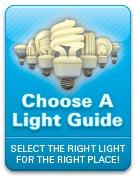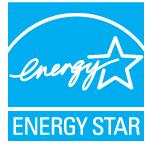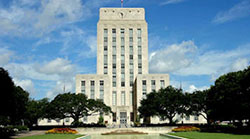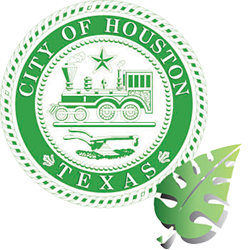Green Houston
More Energy Efficiency Information
Why Conserve •• Home Energy Audit •• Energy Tax Credits ••
Neighbor Electric Vehicles •• Resources •• Compact Fluorescent Lamps (CFLs)
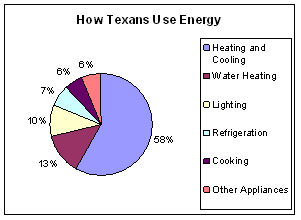 Houstonians have always been about taking action and making things happen. With rising energy costs and political instability across our world, what better time to make ourselves less energy dependent than NOW? Each of us can do some simple things to reduce our dependency on energy and equally as important save ourselves money with lower utility bills.
Houstonians have always been about taking action and making things happen. With rising energy costs and political instability across our world, what better time to make ourselves less energy dependent than NOW? Each of us can do some simple things to reduce our dependency on energy and equally as important save ourselves money with lower utility bills.
We have always been the energy capital of the world. Let's extend that to being the energy conservation capital of the world. We know how to get things done!
Each of us can take steps towards increased energy independence. It makes financial sense. It is good for our country. And it is good for our future. Houston can take the lead in becoming more energy efficient.
Energy conservation has been called the "least-cost" energy strategy, and for good reason. Energy conservation does more than just save money. It reduces environmental and social costs as well.
Energy conservation mitigates the numerous adverse environmental and social impacts associated with energy production and consumption. These include air pollution, acid rain and global warming, oil spills and water pollution, loss of wilderness areas, construction of new power plants, foreign energy dependence and the risk of international conflict over energy supplies.
Energy conservation extends the lifetime of equipment and reduces the maintenance cost by operating less hours and at less than maximum capacity.
In essence, energy conservation means reduced energy, which means reduced emissions and lower utility bills.
The City of Houston is leading by example in reducing its energy consumption:
- City of Houston Operations has reduced energy costs by switching nearly 8,000 of its light fixtures in city-owned facilities to more energy efficient bulbs.
- The City has already adopted the LEED Certification standards for construction of city-owned facilities.
- The City has contracted a portion of its energy portfolio for City of Houston operations, as renewable wind energy, with plans to continually increase the portion over the next few years.
- The City is reducing energy with the purchase of energy efficient devices for all existing beverage vending machines in city facilities, and in addition to retrofitting the existing machines, 50 new ENERGY STAR rated vending machines were added as well.
Home Energy Audit
A home energy audit is often the first step in making your home more efficient. An audit can help you assess how much energy your home uses and evaluate what measures you can take to improve efficiency. But remember, audits alone don't save energy. You need to implement the recommended improvements.
You can conduct a do-it-your-self audit, or higher a professional energy auditor to do a more extensive audit.
Neighbor Electric Vehicles
A Neighborhood Electric Vehicle (NEV) is an all-electric, plug-in car which is street legal on public streets having a posted speed limit of 35 miles per hour, but not greater, and is an alternative for those striving to be more energy efficient.
The NEV provides the driver with an alternative to expensive fossil fuels and an opportunity to significantly reduce their carbon footprint, because they operate on only a fraction of the fossil fuels as a standard vehicle. NEVs are charged by plugging them into a standard 110v electrical outlet, which typically charges in 4 to 10 hours. The vehicles usually obtain a 30 mile range per charge, making them perfect for short-trip neighborhood operation. The largest source of gasoline vehicle emissions occurs during short-trip operations.
Because these vehicles run solely on electricity, they have the potential to provide significant air quality benefits. Other benefits also include lower vehicle cost, reduced noise in communities, reduced parking pressures and low operating and maintenance costs.
By using solar or wind power to generate these vehicles, they have the potential to run fossil fuel free.
- Clean Energy
- Energy Star
- ENERGY STAR's Home Advisor
- Find an Energy Savings Light Bulb
- Home Energy Calculations
- Home Energy Saver
- Resources for Buildings (.pdf)
- Resources for Homes (.pdf)
- Texas Commission on Environmental Quality
- U.S. Department of Energy
- U.S. Environmental Protection Agency
Compact Fluorescent Lamps (CFLs)
•• Energy Efficiency •• Variety and Color •• Mercury •• Recycling CFLs •• Links ••
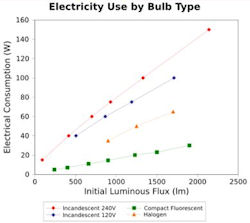 Energy Efficiency
Energy Efficiency
The chart shows the energy usage for different types of light bulbs operating at different light outputs. Points lower on the graph correspond to lower energy use. Thus, with CFLs you get equal light output for less energy.
CFLs combine the energy efficiency of fluorescent lighting with the convenience and popularity of incandescent fixtures.
CFLs can replace incandescent bulbs that are roughly 3–4 times their wattage, saving up to 75% of the initial lighting energy. Although CFLs cost 3–10 times more than comparable incandescent bulbs, they last 6–15 times as long (6,000–15,000 hours).
For a given light output, CFLs use between one fifth and one third of the power of equivalent incandescent lamps. Since lighting accounted for approximately 9% of household electricity usage in the United States in 2001, widespread use of CFLs could save as much as 7% of total US household usage.
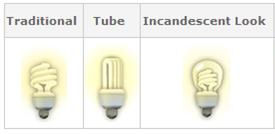
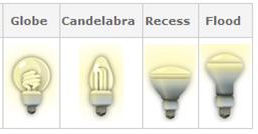
Variety
Forget most of what you think you know about CFLs. Today’s CFLs are not your parents CFLs from say, even five years ago. The light from today’s CFLs is warmer, the bulbs are cheaper and more compact, they don’t flicker or hum, and today there’s a CFL for nearly every use, including recessed lighting, three-way lamps, track lighting, and porch lights. There are now even dimmable CFLs available for lights using dimmer switches. And, perhaps most important to many, CFL buyers who are put off by the spiral design, you can now get CFLs are enclosed in a glass globe; these look somewhat similar to conventional incandescent light bulbs, except they're larger.
Light Color
WARM WHITE (left below) -- Approx. 2700K = Warm White (Looks like incandescent white)
COOL WHITE (right below) -- Approx. 5000K = Cool White (A white / blue light)

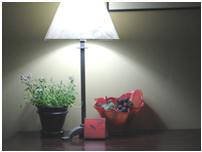
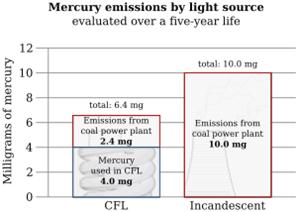 Mercury in CFLs
Mercury in CFLs
CFLs contain a very small amount of mercury sealed within the glass tubing – an average of 4 milligrams a bulb – about the amount that would cover the tip of a ballpoint pen. By comparison, older thermometers contain about 500 milligrams of mercury – an amount equal to the mercury in 125 CFLs. Mercury is an essential part of CFLs; it allows the bulb to be an efficient light source. No mercury is released when the bulbs are intact (not broken) or in use.
Electricity use is the main source of mercury emissions in the U.S. CFLs use less electricity than incandescent lights, meaning CFLs reduce the amount of mercury into the environment. In areas powered by coal, CFLs end up saving on mercury emissions versus incandescent bulbs, due to the offset power use (coal releases mercury as it is burned), as demonstrated in the graph above.
What is mercury?
Mercury is an element (Hg on the periodic table) found naturally in the environment. Mercury emissions in the air can come from both natural and man-made sources. Coal-fired power plants are the largest man-made source because mercury that naturally exists in coal is released into the air when coal is burned to make electricity. Coal fired power generation accounts for roughly 40 percent of the mercury emissions in the U.S.
The use of CFLs reduces power demand, which helps reduce mercury emissions from power plants.
Clean up
- Open nearby windows to disperse any vapor that may escape.
- Wipe the area with a damp, disposable paper towel to pick up all glass fragments. Do not use a vacuum, broom or your hands.
- Place all fragments in a sealed plastic bag and take to the nearest CFL recycling center.
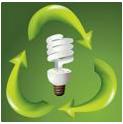 Spent lamps should be recycled to contain the small amount of mercury in each lamp, in preference to disposal in landfills. Only 3 percent of CFL bulbs are properly disposed of or recycled.
Spent lamps should be recycled to contain the small amount of mercury in each lamp, in preference to disposal in landfills. Only 3 percent of CFL bulbs are properly disposed of or recycled.
Residents are encouraged to be careful in packing and transporting their CFLs and tubes to avoid breakage and spillage.
In Houston you can take your CFLs to selected City Recycling Centers which accept CFLs. or to all area Home Depot and IKEA stores.
Return to Energy Efficiency Savings
